Greg Lusty – Raising the Roof with AWIP - PODCAST TRANSCRIPT
May 16, 2025 at 11:00 a.m.Editor's note: The following is the transcript of a live interview with All Weather Insulated Panels President and CEO, Greg Lusty. You can read the interview below or listen to the podcast.
Intro: Welcome to Roofing Road Trips, the podcast that takes you on a thrilling journey across the world of roofing. From fascinating interviews with roofing experts to on-the-road adventures, we'll uncover the stories, innovations and challenges that shape the rooftops over our heads. So fasten your seat belts and join us as we embark on this exciting roofing road trip.
Karen Edwards: Hello and welcome to another episode of Roofing Road Trips from RoofersCoffeeShop. My name is Karen Edwards. And in today's episode, we are going to dive into the world of insulated panels. And I am thrilled to welcome the All Weather Insulated Panels President and CEO Greg Lusty to the podcast. Greg, welcome. Thanks for being here.
Greg Lusty: Thank you, Karen. I appreciate you having me.
Karen Edwards: Greg, please go ahead, introduce yourself to our listeners and tell us a little bit about All Weather Insulated Panels.
Greg Lusty: Okay, Karen, thank you. So again, my name's Greg Lusty. I'm the president of All Weather Insulated Panels. Been with All Weather now for just over five years and it's been amazing five years. Really, really enjoying the role here.
And as far as our company, we were founded in 2006 in Vacaville, California, really rooted in entrepreneurial spirit, innovation. Our founder was a tremendous entrepreneur and really helped shape and grow the company in that sort of form.
So we were originally really rooted in the cold storage market, so insulated metal panels and cold storage really go hand in hand. So that was really where we started relative to the application of our products. But over the last 20 years, we've really grown into something a lot more than that. So we've now got three facilities in the United States, 300 team members and we've really grown into a leader in the roofing space relative to insulated metal panels especially. So really excited about that.
When you talk about what is our mission, I think really generally speaking, it's to simplify the construction process. That's what we're about. That's what we try to accomplish through our products, but not only our products, also our service. So our products and services are purpose is built to do just that, improve-
Karen Edwards: Let me ask you to back up for a minute just because there might be somebody listening that goes, "What the heck is an insulated metal panel?"
Greg Lusty: Yeah.
Karen Edwards: So let's define that.
Greg Lusty: Yeah, yeah, sure.
Karen Edwards: And then let's talk a little more. Yeah.
Greg Lusty: Absolutely. So I probably did just skip right over that IMP thing. So insulated metal panels are commonly referred to as IMPs, insulated metal panels. So an insulated metal panel, it's a single component construction material. And when I say that, I mean it's a bunch of components in one. So when I say we try to simplify the building construction process, that's what I mean. We are taking what is commonly used as a lot of materials, whether it's a wall or a roof and we're replacing a lot of those materials with a single component.
And an insulated metal panel is a sandwich panel that consists of two layers of steel in our case, so a layer of steel in the exterior, a layer of steel in the interior and in the middle of that is insulation. So an insulated metal panel can be manufactured in a variety of forms and shapes and sizes, but generally speaking, it's a sandwich panel with two layers of steel and insulation in the middle.
Karen Edwards: Okay. So rather than a contractor having to make that sandwich in the field or on the job site, you're supplying it ready to go.
Greg Lusty: That's right. It arrives on site as a single component and can be installed as a single component. And again, it replaces maybe four to six different components on a typical construction job site.
Karen Edwards: Now you mentioned cold storage. That makes sense because the insulation is very important to cold storage. What kind of other uses are you seeing it on?
Greg Lusty: Really almost any type of commercial application you'll see insulated metal panels on. We do a ton of work on metal buildings. So a pre-engineered metal building can be... again, a pre-engineered metal building can really be anything from a airplane hangar to a hospital to a fire station to a school, warehousing, manufacturing, et cetera, et cetera. So again, that's so exciting about IMPs is that they're so flexible, they can be used on almost any application, whether it's a roof wall, commercial cold storage, architecturally designed projects, et cetera. So yeah, really almost anything.
Karen Edwards: Wow. So one of the terms that I'm hearing a lot as I'm at events, industry events are data centers. Data centers are driving a lot of the construction that we're seeing these days and are insulated metal panels, are you seeing them being specified or used on these data centers as well?
Greg Lusty: Yes, absolutely. It's one of the growth segments lately. Certainly data centers, it lends itself perfectly to IMPs because, again, because of the efficiency of an IMP, not only the insulation properties of an IMP, but also the installation properties of an IMP. So it simplifies the design and construction of a data center, which is very important when you're talking about the scale of a data center being such a large building. Being able to simplify the building process allows the owner to save money at the end of the day, speed up the process and get that data center running on time within budget. And that's just a huge selling point for an insulated metal panel.
Karen Edwards: So now I know you guys are doing something right, because over 19 years you've grown from one to three facilities and 300 team members. So you said one of your goals is to really simplify the construction process. Tell me a little bit about how you do that.
Greg Lusty: Yeah, great question. I love talking about this because I think this is really what sets our company and our products apart. And I talked a little bit about the product itself. So the product itself, simplification is the goal. So especially when you're thinking in terms of a roofer, if there's a roofer listening, we feel your pain, we understand that labor is very hard to get right now, good labor is hard to get, harder than ever. So things like that are things we're paying attention to. And so we're purposely designing the products to solve those types of problems. We understand from an architectural standpoint how difficult it is to pull a bunch of different parts and pieces together to create a building, not to mention a wall or a roof. So our products are designed to simplify the process and so meaning reducing complexity.
So imagine a single component versus three, four, five, six different components to design a roof, a wall or a deck. We're taking all of those components, all of that complexity and we're squeezing it down into one component, allowing the designer to choose one component rather than four or five, allowing the engineer to worry about one component rather than three or four or five and the contractor worrying about training their crew on one component rather than three or four or five, managing deliveries of one component rather than so many others.
So truly simplifying the design and construction through product is one of the things that we're about. And when you do that successfully, when you can reduce complexity, you can reduce risk. And when you can reduce risk, you can reduce costs. And when you reduce costs, you make the owners happy. So at the end of the day, that's the story from the product side.
And then you think about that, how do you service that, it's just as or more important than the product. So reducing complexity from a service standpoint is the other thing that we're all about. And that's where our customer-first mindset comes from. And we've developed a whole set of services for our customers, whether that's a contractor or an engineer or an architect or designer. We have in-house technical expertise that we believe is second to none in the marketplace. And hopefully our customers feel that too.
But what does that mean? That means that no matter if you're dealing with us from a promotional side, so if you're dealing with one of our maybe architectural reps that are in the marketplace assisting a designer or you're dealing with one of our territory managers who are very technically sound, they're most typically dealing with the contractors and assisting them in product selection and application and estimating and drafting and those sort of technical aspects or even maybe our in-house technical services team, which especially from the digital side, it's booming right now.
So our digital team is phenomenal. We can assist a contractor with providing their customer with digital services like vision packages. So we can design... we can help develop a really cool picture of a building 3D that says, "Hey, this is what your building is going to look like with our product on it." And I think that's becoming more and more valuable to contractors these days as they get more and more involved on the digital end as well.
So yeah, really it's about, again, the product and the service wrapping all that together to reduce complexity on a job site. And I think that's special.
Karen Edwards: It is, yeah, because it's easy to know a little bit about a lot of things.
Greg Lusty: That's right.
Karen Edwards: But a lot of designers, contractors aren't always the expert on a product. And so by you having that service that you offer, that's huge.
Greg Lusty: Yep, yep, we love that. Absolutely.
Karen Edwards: Okay. So I wanted to have you explain to me how an insulated metal panel works on a roof. Where does it go? Is it the deck? Does it have the ability to have other systems go over it when we're thinking of roofing? Can you explain that to me?
Greg Lusty: Absolutely. Good question. So typically for us, we would be participating in roofing in two ways. One would be what I would call the more traditional way for an insulated metal panel or metal roofing in general, which would be a sloped roof. So we have a couple of systems that we can apply to sloped roofing, like a high rib system, which is an insulated metal panel that has a ribbed profile on it, either three ribs or five ribs. And then we also have one that's a standing seam, which is also very common in metal roofing. Standing seam roofing is something that has been around for decades. We have an insulated metal panel version of a standing seam roof, which is also really great.
So both of those products can be applied over steel, in some cases wood, but we really mostly deal with commercial steel buildings, either conventional steel or pre-engineered metal. They do not require any sort of substrate underneath of them, so they can be applied directly to steel girds.
So again, another way that we really look to simplify the whole process is just attach those directly to the steel girts or purlins and we go.
So the one really cool thing about an IMP is that I keep mentioning reducing complexity and simplifying the construction process. And the one thing I guess we haven't gotten into yet is that an IMP, an insulated metal panel, our products are all of the barriers, from a performance standpoint, for an exterior cladding, whether it's a wall or a roof. So it's the air, the water, the thermal, the vapor barrier, all in one count.
Karen Edwards: It does it all. Wow.
Greg Lusty: It does it all. So you literally just need that product and I'm not enhancing that message. That's reality. It really does everything in one. And that's really the beauty of an insulated metal panel.
Karen Edwards: Talk about saving time and saving steps all in one. And probably it's more efficient, I mean, cost-effective, I would think.
Greg Lusty: It can be, it absolutely can be. And that's one of the draws for an insulated metal panel is that if you compare it to other materials, material to material, you won't find the cost savings. But when you compare it to the other materials and labor, that's where you really start to see some of the benefits of IMP from [inaudible 00:12:42].
Karen Edwards: So compare the whole picture. You can't just say the cost of the-
Greg Lusty: Remember to compare the whole thing. Especially if you are roofing contractor, don't forget about the labor [inaudible 00:12:50]. Because if you look at the cost of an IMP versus a traditional metal roof or a traditional roof of other materials, you probably think, "Oh, wow, it looks expensive," but it's really not at the end of the day.
Karen Edwards: So one of the things that I want to make sure we talk about is performance plus sustainability. So I love insulated metal panels right now after talking to you for all this time and learning, because I didn't know a lot about them and how they worked. But I know roofing contractors and contractors in general, every building owner, they want a high performance system and they want energy efficiency, they want sustainability. How do insulated metal panels meet both of those requirements?
Greg Lusty: Yeah, I always say this, that our products are the perfect combination of aesthetics, performance and sustainability. So from a performance and sustainability standpoint, to me, there's no comparison. On the sustainability side, there's several key points to think about and one of those would be material efficiency. So insulated metal panels, when you think about what they're made of, they're made of lightweight steel and insulation, but all of that is fairly lightweight. So when you compare that product to alternative types of wall and roof and deck systems, you're able to reduce the overall weight of the building, construction. In a lot of cases, it's a lot thinner than some other different types of assemblies might be in wall and roofs, a lot thinner than a concrete wall would be, thinner than a layered traditional deck system might be because the R-value of our product is much better than a traditional R-value of insulation that you would put on a deck system.
So material efficiency, I think is a big one. Energy efficiency is another one. Obviously, energy efficiency is the easy one when you're talking about sustainability. With insulated metal panels, you do get a very high R-value per inch. So again, it's an efficient component of the building, which allows you to really reduce the heating and cooling consumption associated with carbon emissions. And reducing carbon emissions is really what it's all about from a sustainability standpoint throughout the operation of a building. So IMPs allow for very high efficiency within a wall, roof or deck system.
I would say supply chain is another one to think about. So when you have... especially on large job sites like an EV battery facility or a data center or even space is another booming segment right now. So these are very large projects with very big scopes. We prefabricate the component in our factory and we supply that to the site in one component, as I mentioned before.
So why is that important for sustainability standpoint? We're reducing construction time, as I mentioned, in many cases, we're reducing the number of trucks being delivered to a job site because it's one component coming to a site, usually from fairly close to a job site because we have the three plants now. So we're really well set up for that. So we can reduce energy use during transportation and things like that. So I think supply chains is an important one as well.
Recyclability is a big one. So steel is one of the most recycled materials in the world and our products are made from steel, so we use a high percentage of recycled material in our panel systems and we even can recycle panels at end of life as well.
Karen Edwards: Nice, nice.
Greg Lusty: So all of that stuff can be found via our EPDs and LCAs. So we're very transparent from a sustainability standpoint. I would welcome any listener to visit our website by panels.com and take a look at our EPDs and LCAs. We're very serious about sustainability. A Planet Passionate is our sustainability goal or program and we're real serious about it. So great question. Thanks for asking.
Karen Edwards: Yeah, yeah, I love it. I know you're hearing more or I'm hearing more about EPDs and LCAs. And people are more interested in earning those LEED credits and building those buildings that are environmentally kind. And so that's great to hear that you guys have those available because that's becoming more important to a lot of building owners and a lot of architects. I'm sure you're seeing that as well.
Greg Lusty: Absolutely, yep.
Karen Edwards: Okay. Wow. So we talked about the resources and the support that you guys offer. I want to just talk about the different options for the product. I mean, it's very versatile. Are we able to have higher R-values, lower R-values? How customizable are the panels? Are they, oh, you get A, B or C, that's your choice or we make it to fit your project?
Greg Lusty: Yeah, you can get anything you want as long as it's white. No, it's very customizable, I would say. So the two things we just talked about were performance and sustainability. I mentioned aesthetics as the other sort of the key of the three-legged stool, I guess.
So aesthetics for us is one of the main things we're promoting because we're promoting to the design community. And the design community is very creative. So aesthetics is important.
So with insulated metal panels, our products, we have a very robust set of standards, but every job is made custom. So you can customize the width of your product, the length of your product, what the product looks on the exterior, whether it's flat or profiled. So we have a whole set of profiles for walls, roofs. We also have a pretty much endless supply of color. Really, whatever color you want on the building, you can do that. It just maybe takes a little longer and a little more expensive if it's a non-standard color.
So from an application standpoint, there's so many things you can do with an IMP. And again, that's what makes it so special is not only do you get the sustainability and the performance, but you can also get the aesthetics as well. So one of the really, really great things about it.
And then from a product standpoint, choice is massive. So you have a lot of choices. We have, again, a robust product range. So whether you're looking for a wall, a roof or a deck, which we haven't talked about deck yet, we'll have to get into that, but especially wall and roof and since we're talking about roofing contractors, roofing is one of those areas in the US market anyway where insulated metal panels are still used very little. And so I'm really excited about that because that's one of the areas where we plan to grow and grow tremendously. So we're excited about the roofing market.
Karen Edwards: Well, so in terms of the roofing market, what's the learning curve for a contractor that's maybe never worked with insulated metal panels and how do you help them overcome that curve?
Greg Lusty: That's a great question, Karen. I'd say roofing contractors are very skilled, it's a skilled labor. So what we've found is with our products, because of the simplicity, I keep saying that word, but really because of the simplicity of our product, the learning curve is very short, especially if they're already doing metal roofing because we're just metal roofing. We just have a little more insulation on the product than a typical metal roof. So it's really not complicated, it's simple.
How do we help them? What do we do? We've actually, this year, launched a program called IMPpro and that is our training program for our partner contractors. So we bring those contractors into our facilities or we go to them on a job site and we have a two-day training course where we will train them on how to install IMPs, tricks of the trade. We've got a team of very, very skilled metalworkers that they'll work with to learn what it is to put an IMP in place, we go through all of the different details and we allow them to put their hands on the product and install it themselves in our factory as well.
So we're really excited about that program. And then we built a loyalty program on the backend of that. So we're going to train you and then we're going to nurture you so that you use our products. And that's really the whole idea behind that.
Karen Edwards: And get rewards, right?
Greg Lusty: That's right. Yeah, absolutely.
Karen Edwards: Awesome. So I know you mentioned you want to talk about metal deck and we could do that now, but I also want to make sure I find out about the warranties.
Greg Lusty: Yeah. So we offer material and workmanship warranties and those are standard 2 year. On the roof, we'll offer a weathertight warranty as well up to 20 years. So again, very standard in the industry and something that we've always had since the inception of the roofing products, but our warranties are second to none in the market for sure.
Karen Edwards: Okay. So contractors, in order to offer a warranty, do they need to go through your training?
Greg Lusty: A weathertight warranty, yes, they would need to go through our training and then we would actually have inspections on site, one at the beginning of the job, one at the end of the job that will perform on a weathertight warranty. So we're in it with the contractor. We're not going to put them on an island and expect them to just put up the product with no training. And absolutely, the product is great, the quality is great. If the installation isn't, then it's a failure. So we're as invested as anyone to make sure that that warranty holds.
Karen Edwards: Okay. So you mentioned roof deck. So do you have insulated metal panels that function as the roof deck?
Greg Lusty: We actually do, yeah. It's one of our most recent innovations. It's called OneDek and we're really excited about it. As I mentioned, IMPs generally are used in the US market more infrequently than they are on walls, but growing. On decks, it's even less. So the opportunity for us to introduce an insulated metal panel to the decking market is really, really exciting for us because it's such a vast market and we think it's one that is really hungry for innovation and this sort of idea that you take what we've been doing over decades with insulated metal panels on walls and roofs, traditional walls and roofs and translating that to the deck market, it just makes so much sense.
Karen Edwards: The roof is really the fifth wall. I mean, that's what we always say.
Greg Lusty: That's right.
Karen Edwards: So wow, why not put it up there?
Greg Lusty: Yeah, absolutely.
Karen Edwards: But tell me what that looks like then. If OneDek is up there, what are we putting over top of that as the finishing?
Greg Lusty: Yeah. So OneDek is basically, think of it as a wall on the roof, that's the fifth wall. I've never heard that expression, Karen, but I might have to steal that. I love it. It fits, it fits, it really does fit OneDek.
So OneDek, that single component wall on the roof, so to speak, is it allows you, as a component, it allows you to remove traditional decking, insulation, cover board and replace it with OneDek. So that's what you're doing, you're removing traditional deck, insulation, cover board and maybe a vapor barrier in there too sometimes. But you're removing all that, you're installing this deck in place of those components. And then we put either a white PVC or a white TPO membrane over top of that. And again, PVC and TPO are widely used today, come in a lot of shapes and sizes, thicknesses and grades and all that good stuff. But we offer that as a package. So we don't manufacture TPO or PVC, but we include that as part of our package, OneDek package to the market and include it in our warranty as well.
Karen Edwards: So Greg, I want to understand how when we use OneDek on the roof and then we put the TPO or the PVC over top of it, how are we adhering that? Are we mechanically fastening it, are we using adhesive? What's that look like?
Greg Lusty: Yes and yes. So we have the ability to either mechanically fasten or adhere. That's, again, the beauty of OneDek. It allows us to be flexible and we know contractors have their favorites, especially in certain climates and expertise. Depending on the project and depending on the budget, we allow the owner or contractor, designer, whoever, to specify what they'd like to put in.
Karen Edwards: Excellent. I love the versatility.
Greg Lusty: Yeah, yeah.
Karen Edwards: Okay. One more question for you. We're recording this during a little bit of economic uncertainty. Maybe there's tariffs, maybe there's not, maybe raw materials, maybe not. So there are some concerns about supply chain challenges and I'm just curious how All Weather Insulated Panels, what are you doing to ensure that contractors can get what they need when they need it, because nobody wants to wait, right?
Greg Lusty: Absolutely. No, a good question. And I think everyone's concerned about all of those things and it just seems like the supply chain becomes more and more important or it has become more and more important really back since COVID, that whole thing was a wake-up call for the supply chain. It's like you better have your ducks in a row because it is one of the most important things. You don't have any products without your supply chain.
So I will say we have a team in-house, really good team in-house that handles our supply chain. We have tremendous buying power, so therefore we have a tremendous supply chain. Great partners both internationally and nationally here. From a what have we done to protect the supply chain? We've developed really good partners here so that when these things happen, like the tariffs, like shortages of supply for any number of reasons, we have the ability to flex our supply chain locally if we need to, which is what we've done most recently.
But yeah, I mean, I think buying power helps us. I think that the way we set our supply chain up, we do have... I mentioned where we make custom products. Every product we make is made to order, but we do have inventory, we do have inventory staged throughout the supply chain in some way, shape or form, whether that's metal coil sitting at a painter or we have finished painted coil in our factories. We do have a variety of inventories throughout the business that allow us to be flexible and react when needed as well.
So I love the question. I think it's very, very pertinent, especially right now, but we have managed to maintain very standard lead times and remain very flexible throughout this challenging environment that we find ourselves in right now.
Karen Edwards: Yeah, I love that because a lot of contractors are having to adapt or adjust. It's like, "Well, I can't get this, so I'm going to have to use this," or, "It might not have been my first choice," but you guys have been through it, you've been doing this a long time. It sounds like you've really got yourselves in a place where you are going to be able to meet the needs of the building community.
Greg Lusty: Yeah, yeah, absolutely.
Karen Edwards: Excellent. Wow, Greg, this was really a fantastic conversation. I'm excited to see the growth of insulated metal panels. They just, like you said, are versatile, they perform and they're pretty, right?
Greg Lusty: Yeah, absolutely, yep.
Karen Edwards: I love it. So you mentioned your website earlier. Go ahead and tell me that again.
Greg Lusty: Yeah, it's awipanels.com. Everything that we just talked about is on there. We're actually getting ready to launch a new website as well. So we're really excited about what's coming. So hopefully in the next six months you'll see a brand new face of All Weather Insulated Panels on the web.
Karen Edwards: Excellent, just in time for your 20th anniversary.
Greg Lusty: That's the idea. Yeah, absolutely.
Karen Edwards: I love it. We'll have to have you back so you can tell us about all the fun things you're going to be doing to celebrate 20 years.
Greg Lusty: We're happy to come back.
Karen Edwards: If you were driving and you didn't get a chance to write that website down, you know you can always go to rooferscoffeeshop.com. All Weather Insulated Panels does have a full directory on the website and it links to their website, so you can easily find them.
Greg, again, thank you. This was a great conversation. Appreciate you being here today.
Greg Lusty: Thank you very much. It was great to be here and hopefully we get to do this again.
Karen Edwards: Yeah. And thank you everybody out there for listening. Be sure to follow us on social media, subscribe to our podcast on your favorite podcast platform because we want to see you on a future episode of Roofing Road Trips. See you next time. Bye-bye.
Outro: If you've enjoyed the ride, don't forget to hit that subscribe button and join us on every roofing adventure. Make sure to visit rooferscoffeeshop.com to learn more. Thanks for tuning in and we'll catch you on the next Roofing Road trip.
Recommended For You
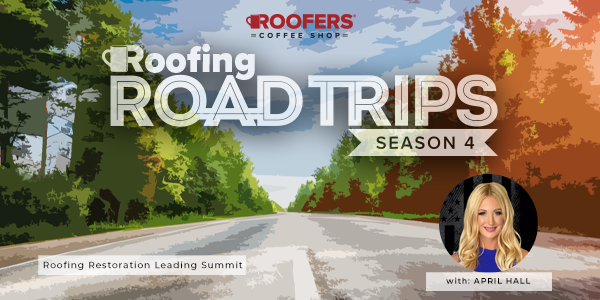
April Hall - Roofing Restoration Leading Summit - PODCAST TRANSCRIPTION
Read More ...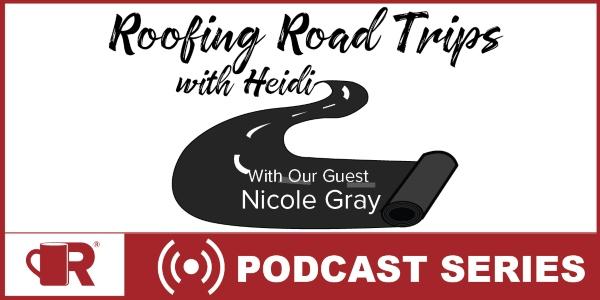
Roofing Road Trips with Heidi with Special Guest Nicole Gray, Loyalty Program Manager at IKO - PODCAST TRANSCRIPTION
Read More ...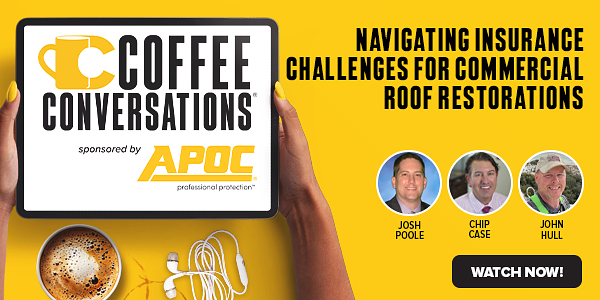
CCS Coffee Conversations - Navigating Insurance Challenges for Commercial Roof Restorations - PODCAST TRANSCRIPT
Read More ...
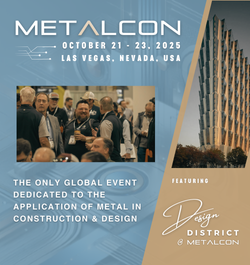
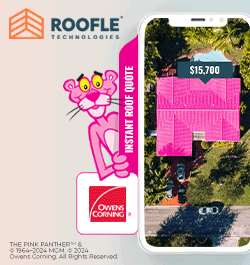

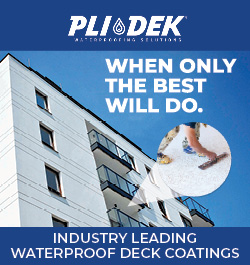
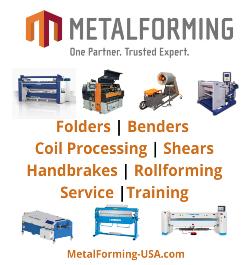


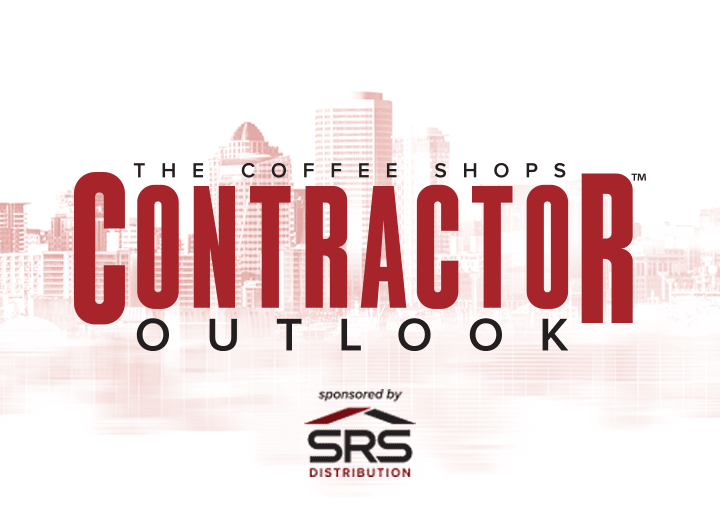

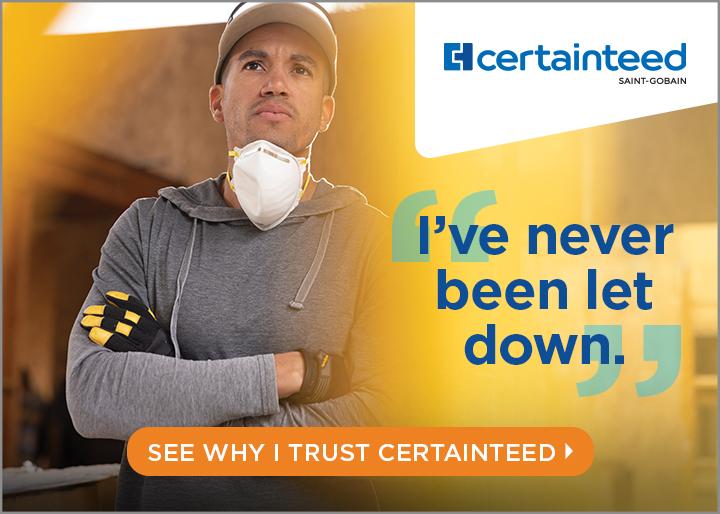
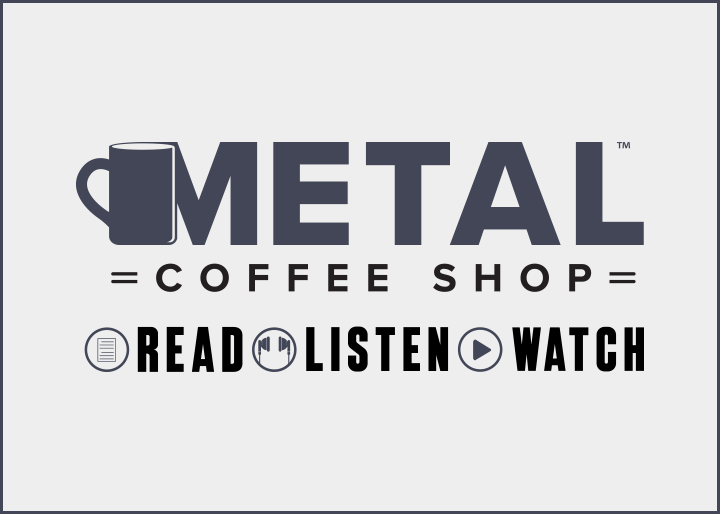

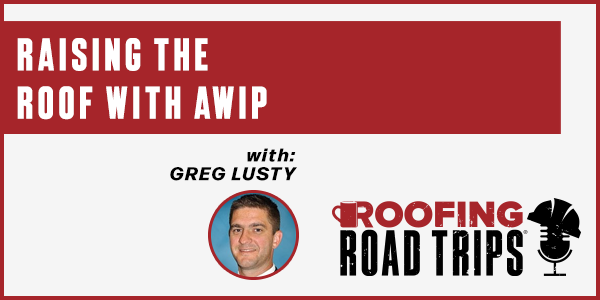

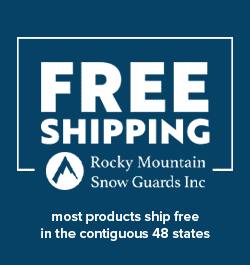
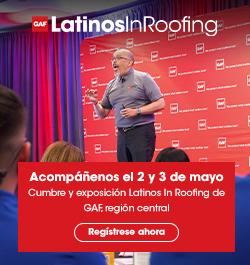
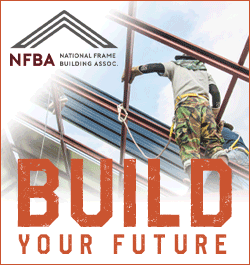

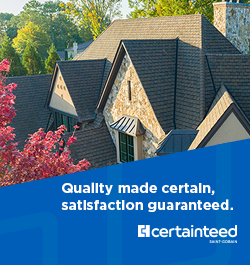
Comments
Leave a Reply
Have an account? Login to leave a comment!
Sign In